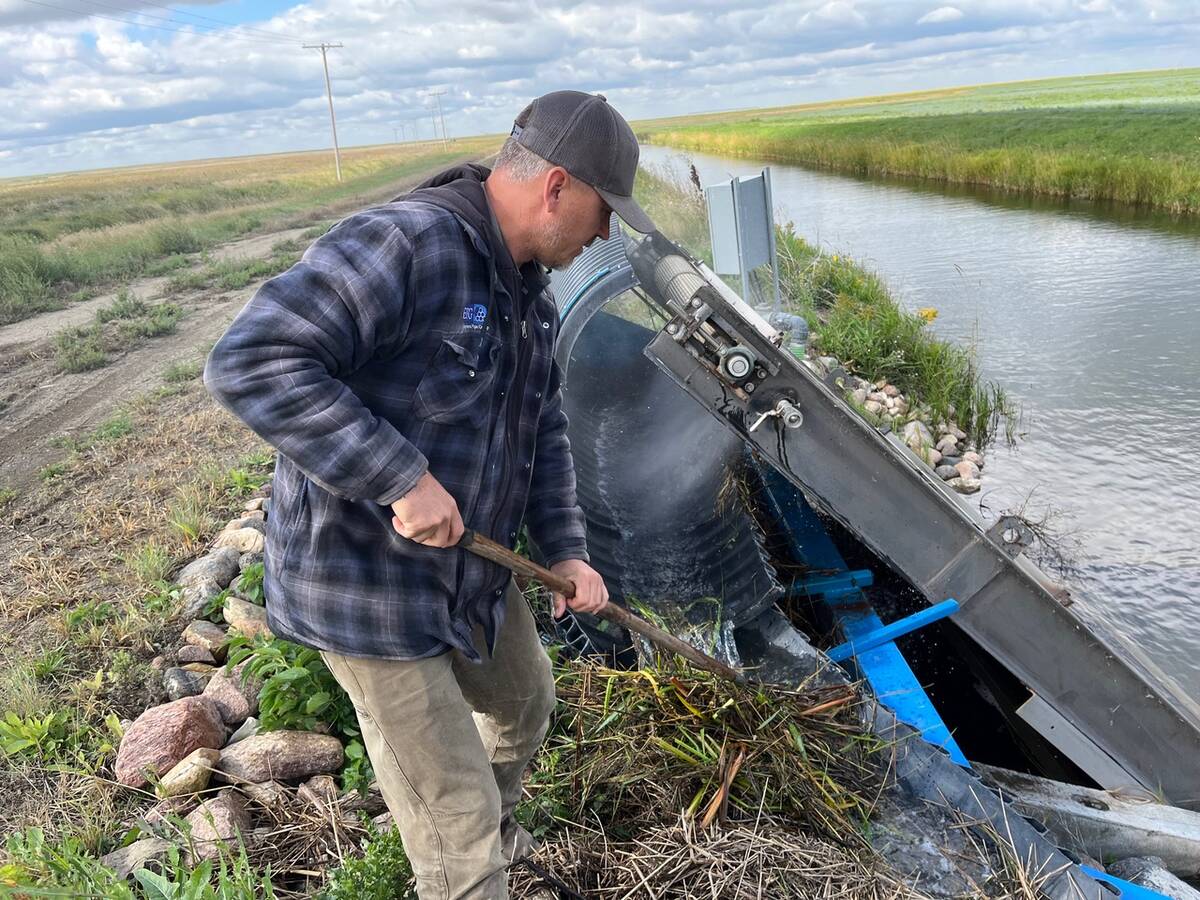What does an animal suffering from BSE look like?
The neurological disorder shows up as a poor gait, apprehensive behaviour, panic, kicking, muscle ticks, repeated movements and seizures.
But these signs of bovine spongiform encephalopathy are also common to many other brain diseases, said the head of pathology at Canada’s National BSE Reference Laboratory.
From brain tumours to infections of the upper spine and brain, BSE is clinically similar to other brain disorders, says Stefanie Czub.
She said producers and veterinarians must be aware of BSE symptoms in cattle if Canada is to ensure that any instance of the disease is found and controlled.
Read Also

Saskatchewan farmer uses tile drainage to manage water
The integration of both irrigation and tile drainage results in higher yields, water efficiency, improved soils and less nutrient runoff, says one producer.
Czub presented a University of Zurich-produced video to prairie veterinarians attending the annual June conference of the Western College of Veterinary Medicine and the Saskatchewan Veterinary Medicine Association in Saskatoon. The video, created by Swiss researcher Ueli Braun, is a “valuable tool for anyone in the industry that deals directly with live animals,” she said.
The video shows both normal and BSE infected cattle reacting to a variety of stimuli, including light, noise and touch. It also shows the behavioural signs of kicking, a faulty gait, hyper-vigilance, aggression, panic attacks, restraint difficulties, jerking movements, staring, head bobbing and nose licking.
Producers and veterinarians can see the video on Braun’s University of Zurich website at www.bse.unizh.ch/english/sequencies/index.html.
Neurological exams in humans, cattle and other mammals are similar, Czub said.
Braun points out in his exam instructions that the most important signs of BSE are a hypersensitivity to manipulations of the head and neck and disturbances of locomotion.
Czub told vets that it is sometimes difficult to recognize gait disturbances.
Pacing, the simultaneous stepping of front and back legs on the same side of the animal, may be present.
Ataxia, an awkwardness of movement caused when the cerebellum region of the brain is damaged, may be accompanied by a high-stepping movement of the rear limbs, tail-end swaying or a need to leap over small, lower objects or even cracks in a concrete floor or a doorway threshold.
Czub said producers are the most likely to notice changes in behaviour.
“They are the most familiar with the animals’ personalities, so they would likely be the ones to first sense when something is wrong,” she said.
Panic and a sense of impending doom appear to dominate the minds of BSE infected cattle, but earlier in the disease there may be sudden startled responses when a bucket or shovel is struck nearby.
Other symptoms may show up as anxiety and exaggerated behaviours when the animals are moved to new surroundings.
Eye movements that show upset, or ceiling staring may occur. Constant licking of the nose, teeth grinding and twitching of muscles on the head and neck can be signs. Producers may also look for violent kicking at the sound or movement of hay or manure forks, milking machines or other harmless sounds that would not in the past have alarmed the animal.
Some animals are sensitive to sudden, loud noises, being touched or the switching on and off of a bright light, but Czub said sensitivity to all three is unusual in a healthy animal.
Touching the head and neck may cause muscle twitching or more violent head tossing or vocalizing. Tapping with a sharp pen point along the hip, back and sides may cause muscle quivering in brain-damaged animals.
Czub said one key to evaluating these reactions is repeatability. Infected animals fail to become accustomed to the stimuli.
Czub said that for these tests to be considered valid, trained vets should carry out them out. Producers observing these behaviours should call in their vet for a professional diagnosis.
“These are only clinical signs of a neurological disorder, not a diagnosis of BSE,” she said.
















